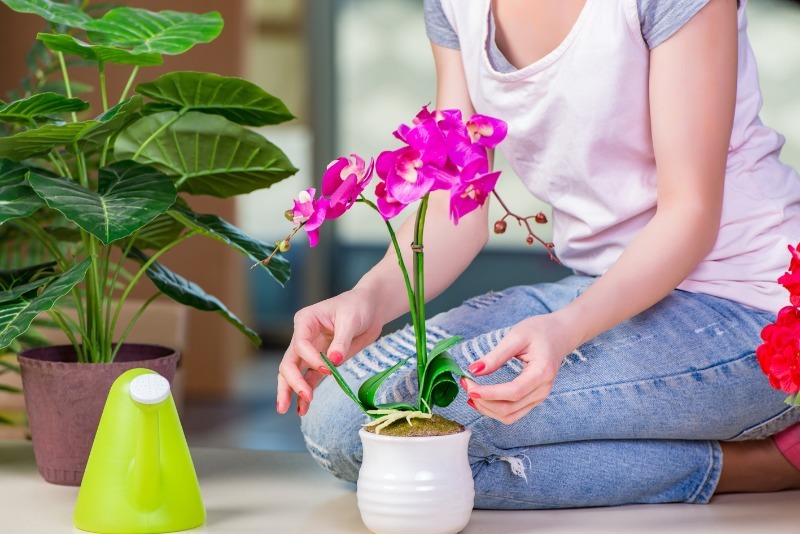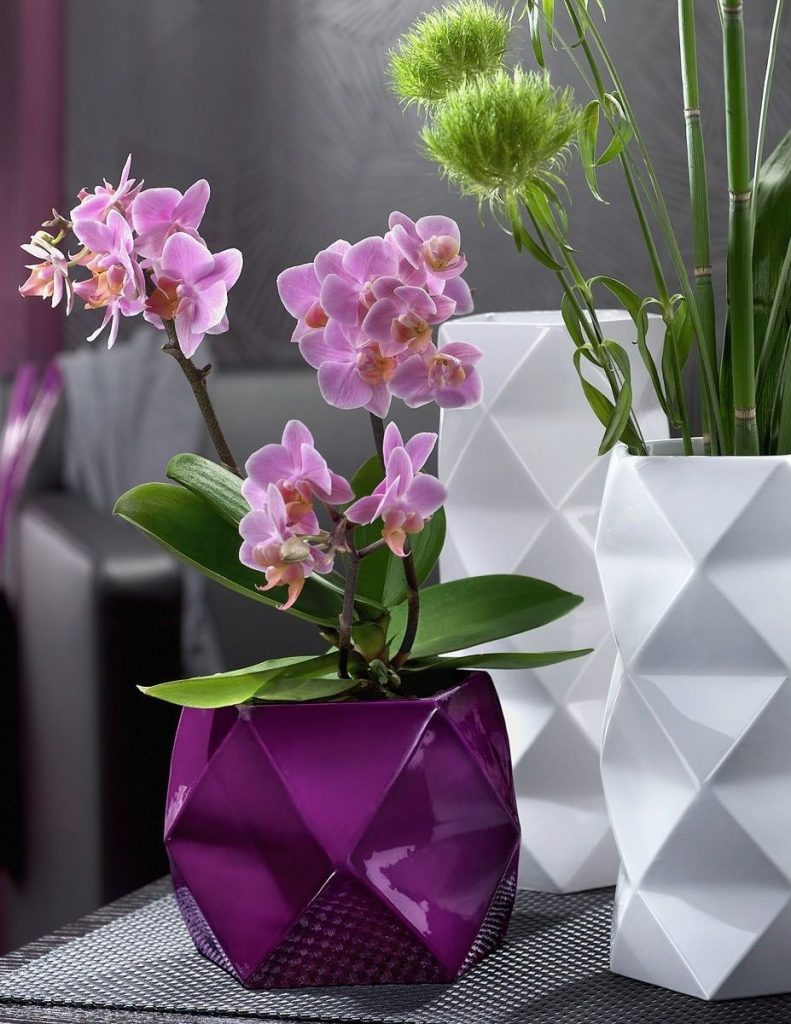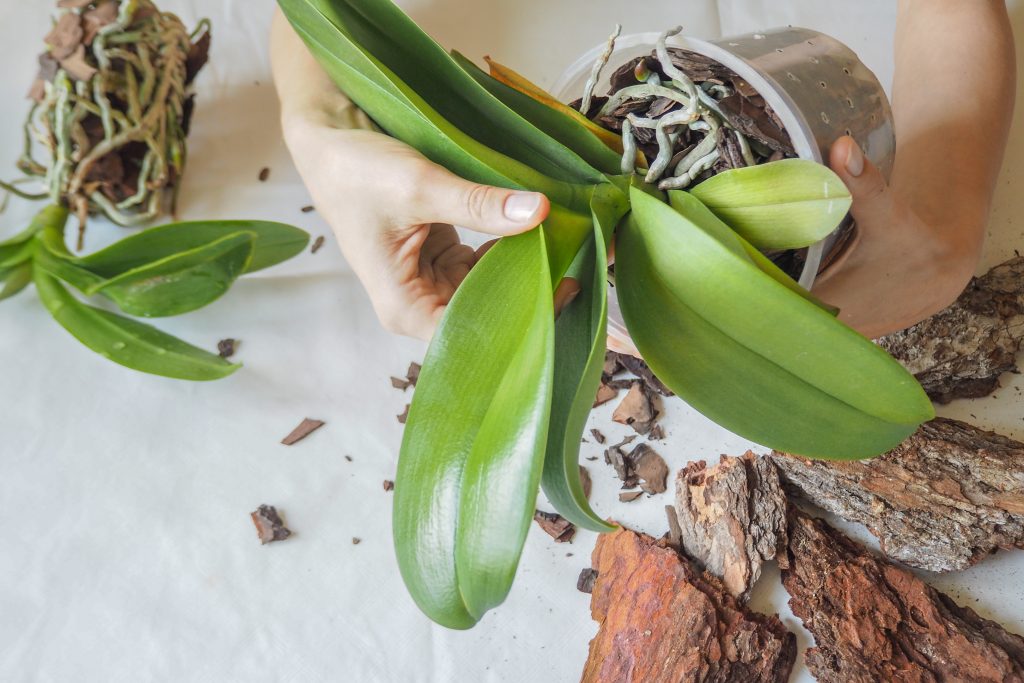Orchid is a beautiful, but very capricious flower that requires delicate care. When the roots grow strongly, transplanting into a larger container is necessary. Errors during this procedure have a bad effect on the condition of the plant and often lead to death. In order not to harm the exotic beauty, follow a few rules.

Break the old pot
Spring is considered the best time for transplanting. Remember that you cannot transplant an orchid during flowering.
It is necessary to remove the flower with the soil, otherwise there is a risk of damaging the roots. They are fragile and break easily in hands. In this case, the orchid will die. The operation must be carried out without haste.
To make the roots more flexible, water the soil before transplanting. After that, the walls of the temporary soft plastic container are kneaded with your fingers. But you won't be able to gently pull the orchid out of a rigid permanent pot, then you need to break or break it.
We remove unnecessary parts of the plant
When transplanting, it is important to rid the flower of all that is superfluous. Dried and yellowed leaves are removed. If traces of rot are visible on the roots, then the damaged parts are carefully removed, then the disease will not spread further.
In order to see the roots well, they are pre-washed under running warm water, and then left to dry for several hours. Rotten scions will be brown in color. They are carefully separated with scissors or secateurs. In this case, they capture about a centimeter of healthy tissue. The blades are pre-wiped with alcohol to avoid infection.
Slicing processing
When removing damaged leaves and fragments of the roots, the cut sites must be treated with disinfectants. If this is not done, then pathogenic bacteria and fungi can easily penetrate into fresh wounds, and the plant can become seriously ill.
For processing, it is recommended to use a weak solution of potassium permanganate. You can sprinkle these places with ground cinnamon or crushed activated carbon. Sometimes iodine and brilliant green are also used for this purpose.
Pot selection
Choosing the right container for growing an orchid plays a big role in its growth and flowering. Take a pot that is a few centimeters larger than the underground part of the plant. Then the flower will not suffer from crowding, but it does not need a too spacious container.
The material is not important, the flower feels great in plastic too. The bottom needs drainage holes to drain excess water and provide ventilation. If there are no holes, then they can be easily made with a hot nail.
It is best to buy a transparent container. The root system of orchids is also involved in the process of photosynthesis, therefore it needs sunlight.
For large specimens, a weight is placed on the bottom of the pot so that it does not turn over.
High quality substrate
Orchids are demanding on growing conditions. One of the keys to their health is considered a suitable soil. Buy a substrate of high quality and specially designed for these flowers. It helps to retain moisture and holds the plant securely in the pot.
The most commonly used are pine bark, peat or coconut fiber. The bottom layer should be drainage to prevent moisture stagnation. Development and flowering will largely depend on the composition of the soil.The substrate should not be strongly compacted so that the root system can breathe.
Orchids like watering in moderation, but regular. The water is preliminarily defended so that it warms up to room temperature and gets rid of chlorine compounds.
The exotic beauty does not tolerate dry air, it is useful to periodically spray its leaves with water.
Transplanting is very stressful for the plant, even if it is done according to the rules. It is supposed to be carried out no more than once every 2-3 years. After the procedure, the flower needs protection from direct sunlight, for 2 weeks it is placed in a shaded place away from heating appliances and drafts. It will take some time for full recovery.


